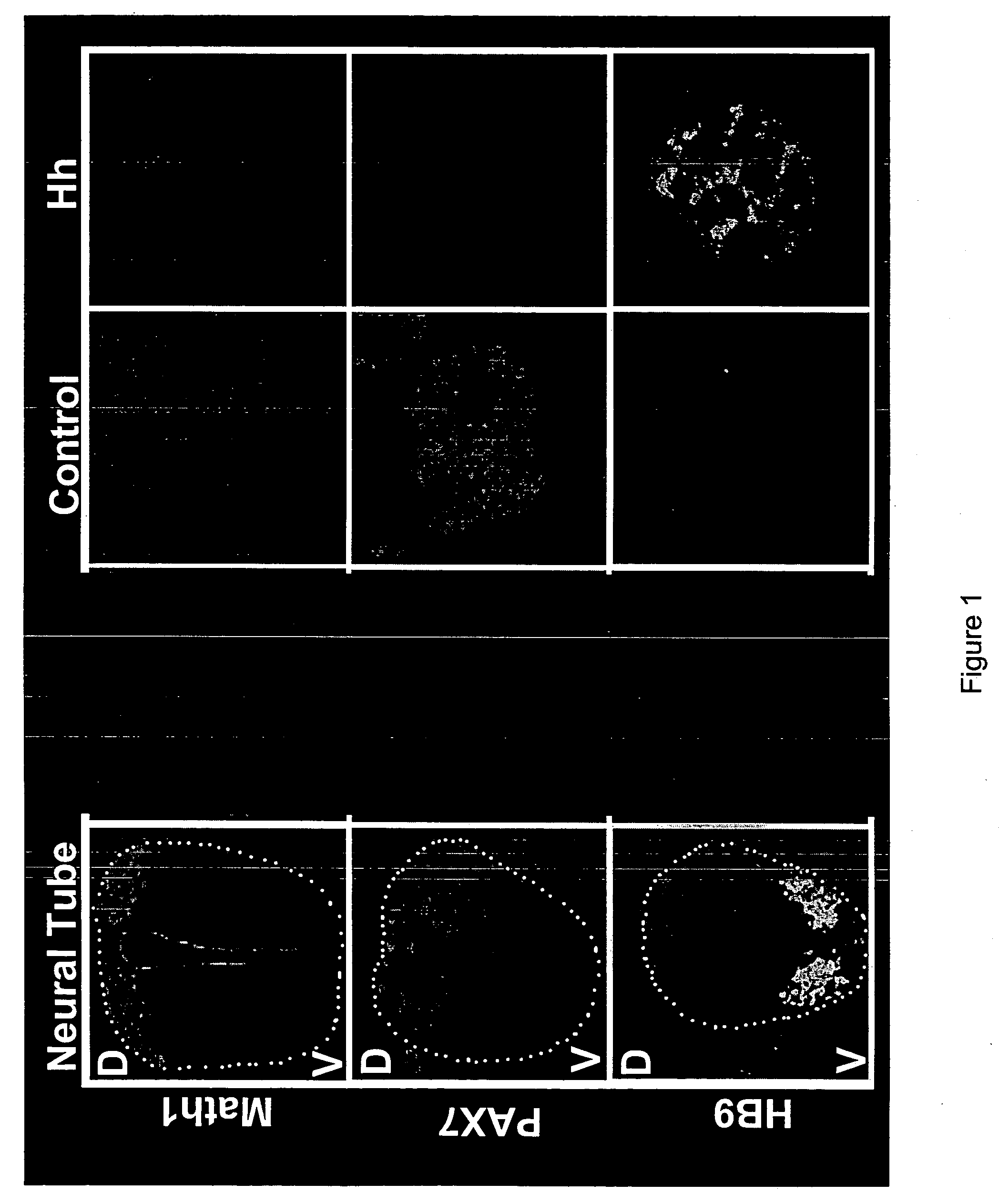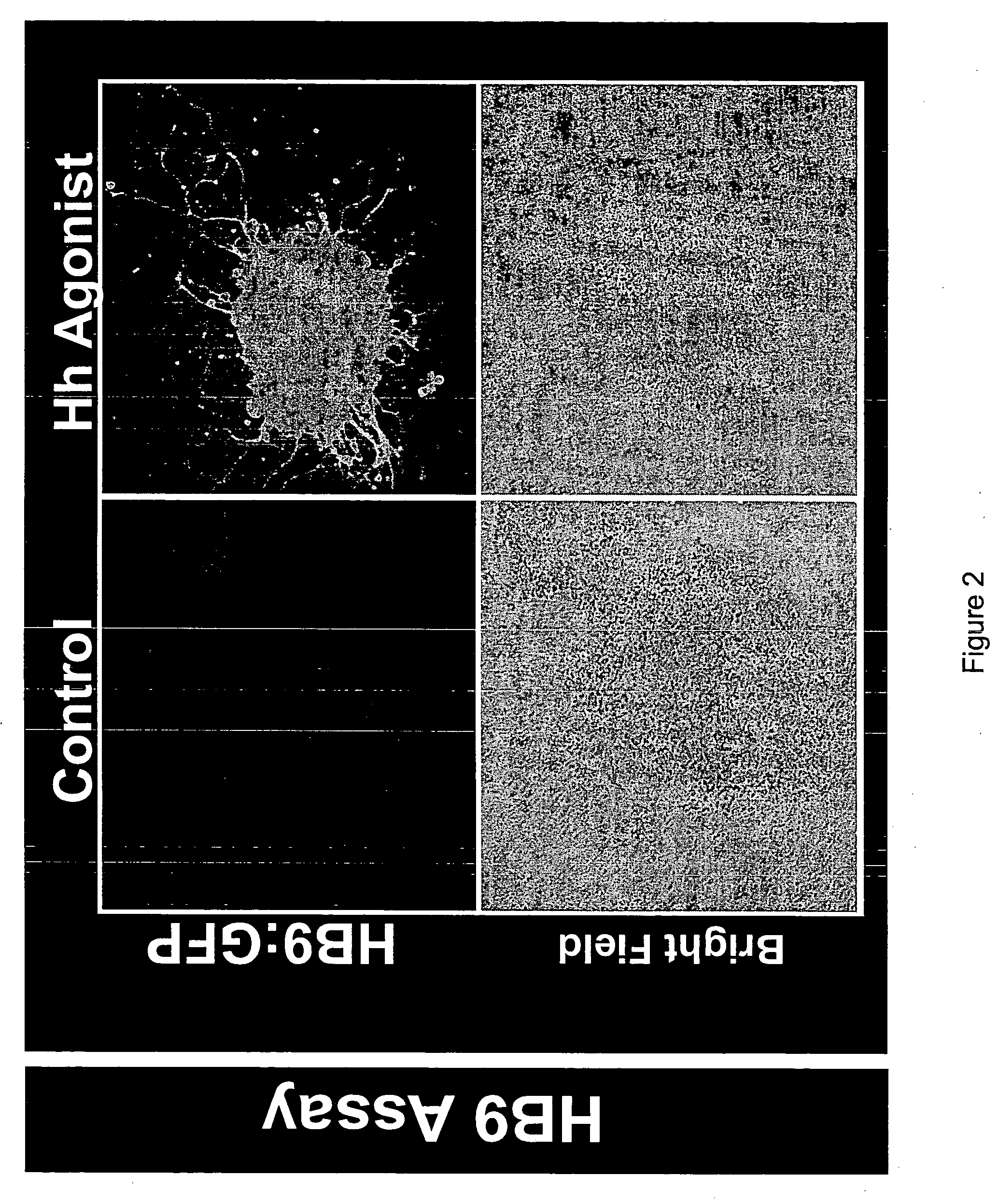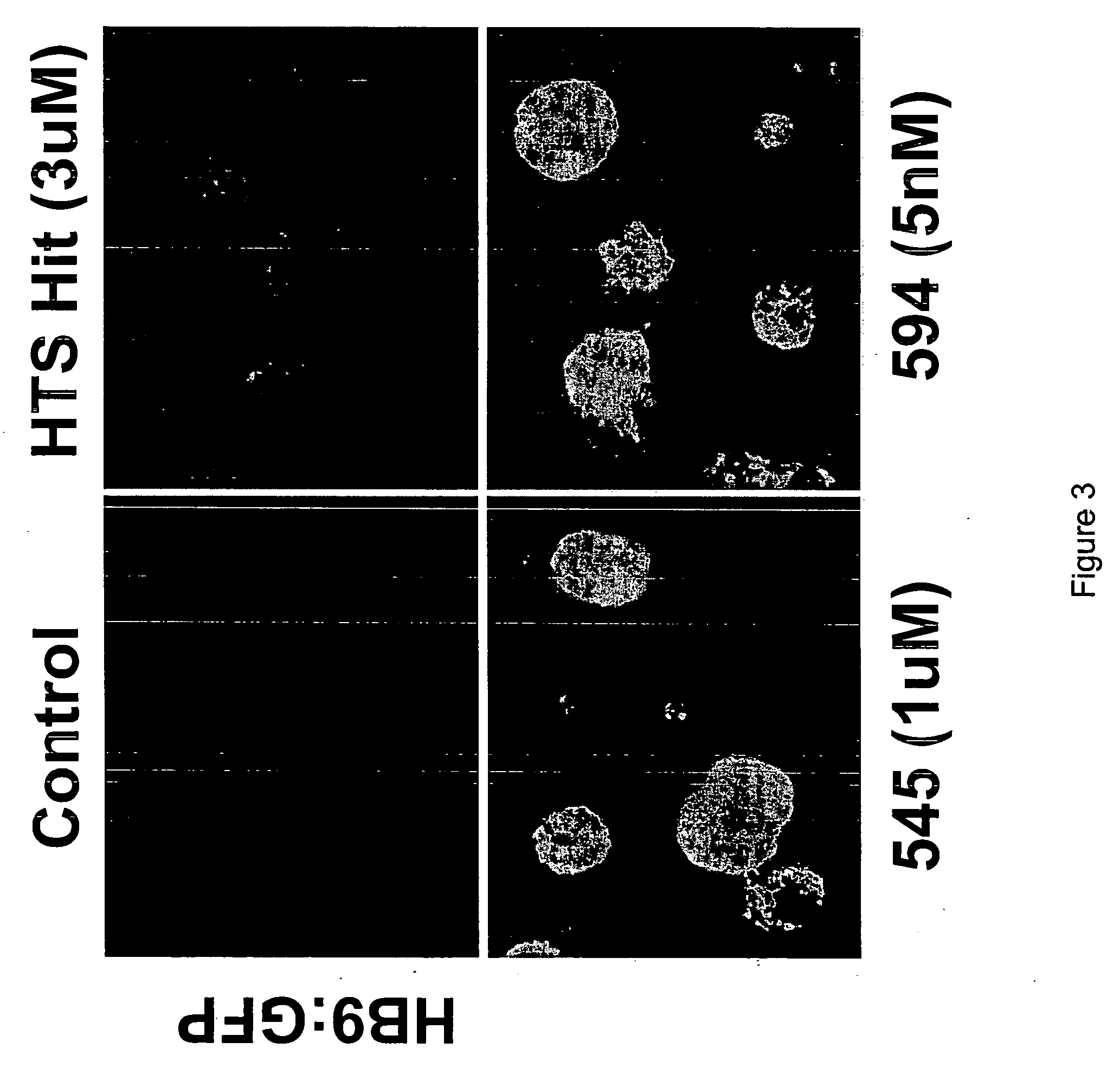Stem cell-based methods for identifying and characterizing agents
a stem cell and agent technology, applied in the field of stem cell-based methods for identifying and characterizing agents, can solve the problems that the tremendous developmental potential of many stem cells has also hampered their use as a therapeutic agent, and achieve the effect of promoting differentiation
- Summary
- Abstract
- Description
- Claims
- Application Information
AI Technical Summary
Benefits of technology
Problems solved by technology
Method used
Image
Examples
example 1
Methods of Identifying Agents that Promote Differentiation of a Embryonic Stem Cell to a Particular Differentiated Neuronal Cell Type
[0365] The following method is indicative of that which can be used to identify and / or characterize an agent that promotes the differentiation of embryonic stem cells to a particular neuronal cell type. Briefly, embryonic stem cells are cultured under standard conditions well known in the art for embryonic stem cells derived from a variety of organisms (see, for example, Wichterle et al. and Benvenisty et al.). ES cells are aggregated to form embryoid bodies. The ES cells are biased to differentiate along a neuronal fate by treatment of the embryoid bodies with retinoic acid (i.e., the ES cells are neuralized). Cells treated with retinoic acid are then contacted with one or more test agents (the cells can be contacted with the test agent either simulataneously with retinoic acid or following treatment with retinoic acid). The ability of the test agent...
example 2
Methods of Identifying Agents that Promote Differentiation of a Stem Cell to a Particular Differentiated Neuronal Cell Type
[0367] The following method is indicative of that which can be used to identify and / or characterize agents that promote the differentiation of a stem cell to a particular neuronal cell type. Neuronal stem cells isolated from the brain of fetal or adult rats or mice are cultured according to methods well known in the art and described herein (see, for example, U.S. Pat. No. 5,411,883 and U.S. Pat. No. 6,294,346). Neuronal stem cells are aggregated to form neurospheres. The neuronal stem cells and neurospheres are already “neuralized”, and thus the step of contacting the cells with one or more factors that bias the cells to a neuronal lineage is not necessarily required. Accordingly, the cells are optionally cultured in the presence of retinoic acid, or another factor that typically biases cells to a neuronal cell fate. Biased cells (either treated with retinoic ...
example 3
Methods of Identifying Agents that Promote Differentiation of an Embryonic Stem Cell to a Particular Differentiated Mesodermal Cell Type
[0369] The following method is indicative of a method that can be used to identify and / or characterize agents that promote the differentiation of an embryonic stem cell to a particular differentiated cell type. Briefly, embryonic stem cells are cultured under standard conditions well known in the art for embryonic stem cells derived from a variety of organisms (see, for example, Wichterle et al. and Benvenisty et al.). ES cells are aggregated to form embryoid bodies. The ES cells are biased to differentiate along a mesodermal fate by treatment of the embryoid bodies with a biasing factor. High serum is an example of a factor known to bias certain stem cell populations along mesodermal lineages. Biased cells are then contacted with one or more test agents (the cells can be contacted with the test agent either simulataneously with or following treatm...
PUM
| Property | Measurement | Unit |
|---|---|---|
| pH | aaaaa | aaaaa |
| pH | aaaaa | aaaaa |
| Tm | aaaaa | aaaaa |
Abstract
Description
Claims
Application Information
 Login to View More
Login to View More - R&D
- Intellectual Property
- Life Sciences
- Materials
- Tech Scout
- Unparalleled Data Quality
- Higher Quality Content
- 60% Fewer Hallucinations
Browse by: Latest US Patents, China's latest patents, Technical Efficacy Thesaurus, Application Domain, Technology Topic, Popular Technical Reports.
© 2025 PatSnap. All rights reserved.Legal|Privacy policy|Modern Slavery Act Transparency Statement|Sitemap|About US| Contact US: help@patsnap.com



